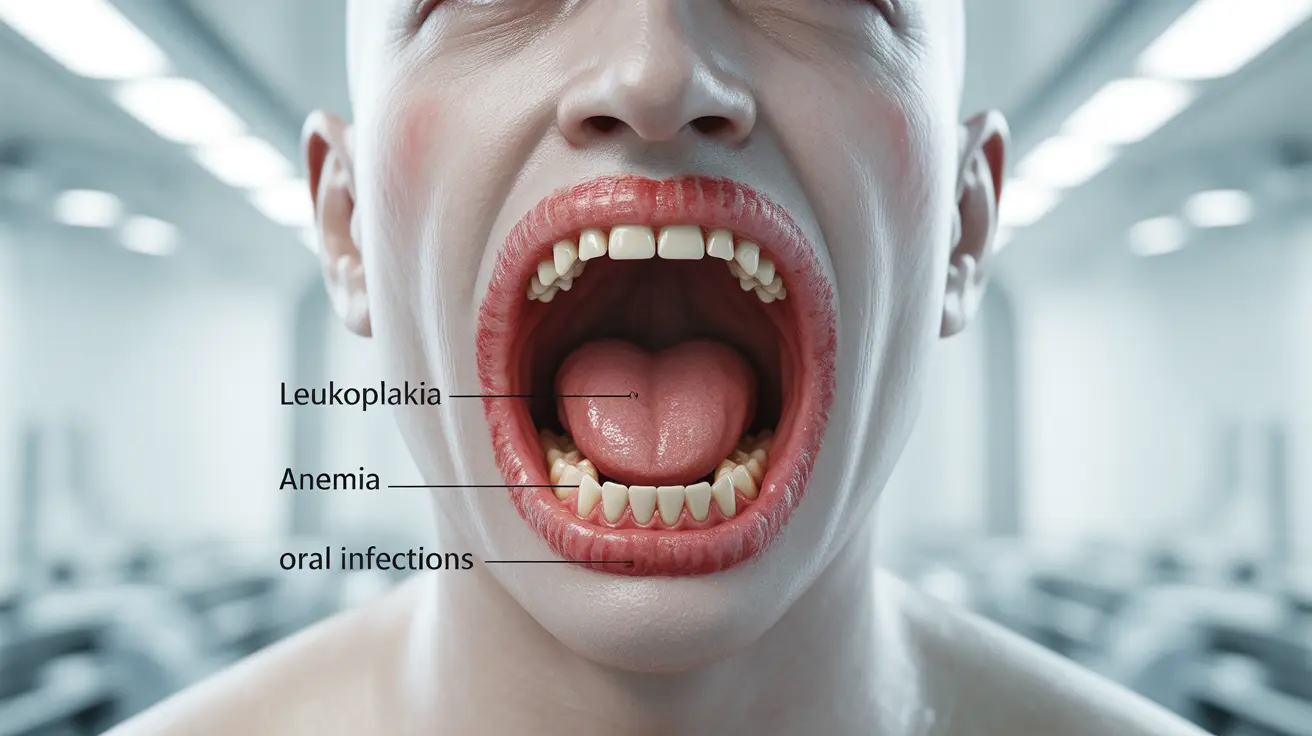White gums can be a concerning oral health symptom that may indicate various underlying conditions, from simple irritation to more serious medical issues. Understanding the causes and knowing when to seek professional help is crucial for maintaining good oral health and overall well-being.
In this comprehensive guide, we'll explore the common causes of white gums, associated symptoms, and treatment options, helping you make informed decisions about your oral health care.
Common Causes of White Gums
Several conditions can cause white patches or discoloration of the gums:
Leukoplakia
Leukoplakia appears as thick, white patches on the gums that cannot be scraped off. This condition often develops in response to chronic irritation and may have a slightly raised texture. While usually harmless, some cases can be precancerous and require medical evaluation.
Anemia
Iron deficiency anemia can cause the gums to appear pale or whitish, along with general paleness in other tissues. This occurs due to reduced red blood cell production and decreased oxygen delivery to the tissues.
Oral Infections
Various infections can cause white patches or discoloration of the gums, including:
- Candidiasis (oral thrush)
- Bacterial infections
- Periodontal disease
Chemical Irritation
Exposure to certain substances can cause gum whitening, including:
- Harsh mouthwashes
- Teeth whitening products
- Chemical burns from aspirin
- Strong dental cleaning solutions
Signs and Symptoms to Watch For
When experiencing white gums, pay attention to these accompanying symptoms:
- Pain or tenderness
- Bleeding when brushing or flossing
- Changes in gum texture
- Bad breath
- Loose teeth
- Difficulty eating or drinking
Prevention and Care
Maintaining good oral hygiene is essential for preventing many causes of white gums:
- Brush teeth twice daily
- Floss regularly
- Use an antiseptic mouthwash
- Visit your dentist regularly
- Avoid tobacco products
- Maintain a balanced diet
When to Seek Professional Help
Consult a healthcare provider or dentist if you notice:
- White patches that persist for more than two weeks
- Pain or bleeding
- Spreading or changing lesions
- Difficulty eating or speaking
- Associated symptoms like fever or fatigue
Frequently Asked Questions
What are the common causes of white gums and how can I tell which one I have?
Common causes include leukoplakia, anemia, oral infections, and chemical irritation. The specific cause can often be determined by considering additional symptoms, the appearance of the white areas, and whether they can be scraped off. Professional evaluation is recommended for accurate diagnosis.
When should I see a doctor or dentist about white patches or white gums in my mouth?
Seek medical attention if white patches persist for more than two weeks, cause pain, spread or change appearance, or are accompanied by other symptoms like fever or difficulty eating. Any concerning changes in your oral health warrant professional evaluation.
How is leukoplakia diagnosed and treated when it causes white gums?
Leukoplakia is diagnosed through visual examination and possibly biopsy. Treatment typically involves removing the source of irritation (such as smoking), monitoring the patches, and in some cases, surgical removal if precancerous changes are detected.
Can anemia cause white gums, and what other symptoms should I watch for?
Yes, anemia can cause pale or white gums. Other symptoms may include fatigue, weakness, shortness of breath, dizziness, and pale skin. If you suspect anemia, seek medical evaluation for proper diagnosis and treatment.
What steps can I take to prevent white gums caused by gum disease or oral infections?
Maintain good oral hygiene by brushing twice daily, flossing regularly, using antiseptic mouthwash, and visiting your dentist for regular checkups. Avoid tobacco products, limit alcohol consumption, and maintain a healthy diet rich in vitamins and minerals.




